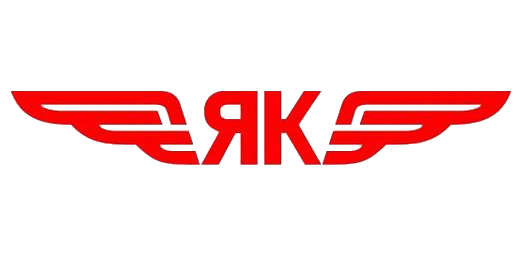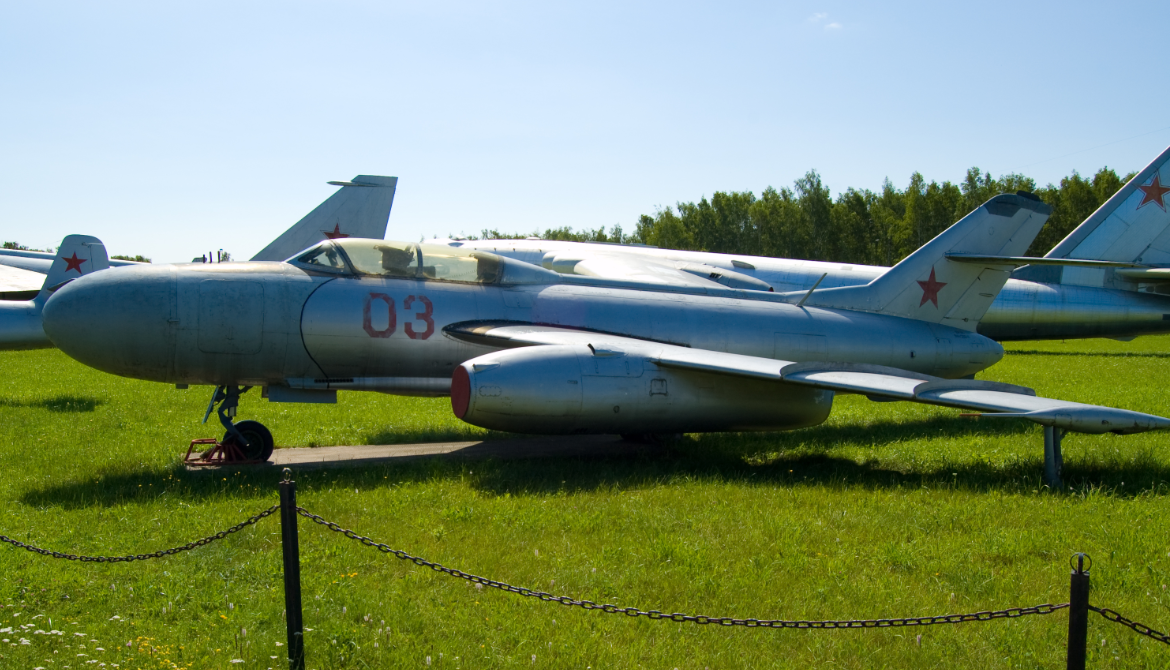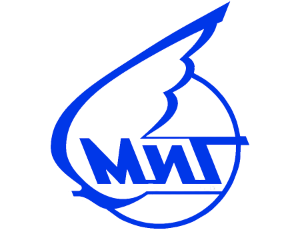JSC A.S. Yakovlev
Yak-25 ("Flashlight")
 |
|
| Yak-25 at Monino Aviation Museum | |
| Role | Interceptor fighter and reconnaissance aircraft |
|---|---|
| Manufacturer | Yakovlev |
| First flight | 19 June 1952 |
| Introduction | 1955 |
| Retired | 1967 (Yak-25M), 1974 (Yak-25RV) |
| Primary users | Soviet Air Force Soviet Air Defence Forces |
| Number built | 483 + 155 |
.
History JSC A.S. Yakovlev Design Bureau
Yakovlev Yak-25
(NATO reporting name: "Flashlight")

The Yakovlev Yak-25 (NATO designation Flashlight-A/Mandrake) was a swept wing, turbojet-powered interceptor and reconnaissance aircraft built by Yakovlev and used by the Soviet Union.
Design and development

Yak-25RV
A reconnaissance derivative of the Yak-25, the Yak-25RV (Razvedchick Vysotnyj, "high-altitude reconnaissance"), was developed in 1959 (NATO codename 'Mandrake'). It had a completely new, long-span straight wing of 23.4 meters (more than twice that of the Yak-25M interceptor) with a total area of 55 square meters. Camera and sensor packs were added in the fuselage. Some versions may have retained one cannon.

Despite its low wing loading, the 'Mandrake's' altitude performance was marginal at best, with considerable engine problems at high altitudes, excessive vibration, and primitive equipment that imposed high workloads for the crews. The Soviet Air Force nevertheless kept the Yak-25RV in service until 1974. A few were used in the late 1970s for monitoring of radioactive contamination, with specialized sensors; these were designated Yak-25RRV. Efforts in 1971 to develop the 'Mandrake' as a high-altitude interceptor (Yak-25PA) proved unsuccessful.

0
KmCeiling
0
KmCombat RANGE
0
Km/hAircraft Speed
0
Max Crew
Photo Gallery
JSC A.S. Yakovlev Design Bureau Yak-25
(NATO reporting name: "Flashlight")


JSC A.S. Yakovlev Design Bureau
Yakovlev Yak-25
(NATO reporting name: "Flashlight")
General Info
-
-
-
- Crew: two, pilot and radar intercept operator
- Length: 15.665 m (51 ft 4.87 in)
- Wingspan: 10.964 m
- Wing area: 28.95 m2 (311.62 sq ft)
-
-
Powerplant
-
-
-
- Empty weight: 6,210 kg
- Gross weight: 9,220 kg
- Powerplant: 2 × Mikulin AM-5 (RD-5A) turbojets , 19.6 kN (4,410 lbf) thrust each
-
-
Performance
- Maximum speed: 1,090 km/h
- Range: 2,700 km
- Service ceiling: 12,000 m
- Rate of climb: 44 m/s (8,660 ft/min)
.
Links to Youtube & Others
In a maritime context, the Yak-38 was not limited to the decks of Kiev. In September 1983, AV-MF pilots operated from the civilian Ro-Ro vessel Agostinho Neto, and NII-VVS pilots conducted further tests from another Ro-Ro vessel, Nikolai Cherkasov. In both cases, use was made of a heat-resistant landing platform; further land-based trials tested the practicality of dispersed landing platforms, in a similar concept to the British Royal Air Force's Harrier operations in West Germany.
Yakovlev Yak-25 Flashlight/Mandrake
The initial pre-production version, differing slightly from the Yak-38. It weighed 6,650 kg (14,660 lb) compared to the Yak-38's 7,370 kg (16,250 lb) and the engines were slightly less powerful..
Youtube Link
The majority of Yak-36M initial production deliveries were to the 279 OKShAP (Otdelny Korabelny Shturmovoy Aviatsionny Polk, Independent Shipboard Attack Air Regiment), initially based at Saki, the AV-MF's training centre in Crimea.









.png)
.png)



